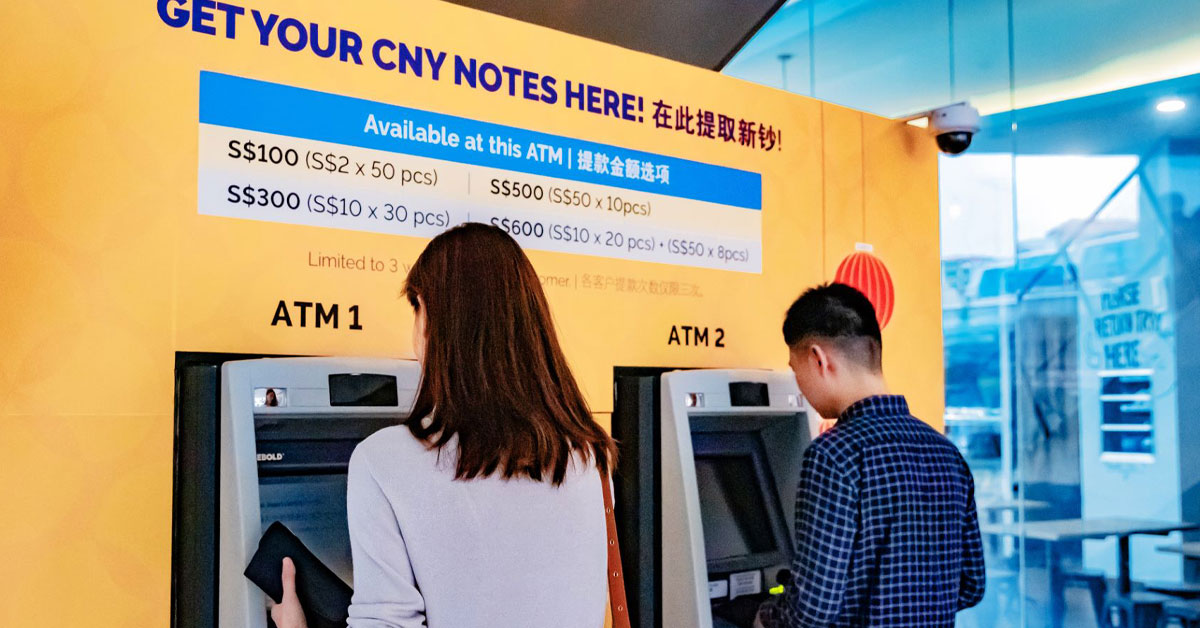Recently, Singaporean influencer Irene Zhao managed to earn millions of dollars through what initially started out as Telegram stickers turned into buyable digital property, thanks to her fervent army of simps.
Since this isn’t Twitch.tv or anything, I won’t be banned for naming them for what they are, and what they stan for, so I will call a simp a simp.
Take that, censorship on Twitch!
Fungibility and Non-Fungibility
Now, you might be asking how does one use Telegram meme sticker packs and turn them into purchasable digital property that managed to generate over $7.5 million dollars?
Although I’m not an expert in the cryptocurrency, the internet is thankfully present to explain these concepts in simplified terms.
In Non-Fungible Tokens (NFT) for Dummies, it’s better to explain what fungible units are first.
The easiest and most common example is physical currency.
Whether it is a dollar coin in your pocket, a dollar coin you picked up from the floor, or a dollar coin that has been sitting in the very pits of your old primary school bag for who knows how long, it will still hold the same value of a dollar.
Therefore, it allows it to be interchangeable with each other, and also divisible into two fifty-cent coins or ten ten-cent coins, whilst representing the same value in total.
The key feature for fungibility is that physical differences, like the serial numbers on the coin, the year it was produced in, will not impact its perceived or agreed value.
In summary: the perceived and agreed value of a fungible unit will always stay constant regardless of minor physical differences, and they can be interchangeable and divisible, without changing the fundamental nature of the item.
Now, non-fungible assets are the exact opposite.
Likewise, there are three main characteristics:
- Unique, verifiable identity
- Provable scarcity
- Indivisibility
Non-fungibility assets are usually very closely tied to the identity of the owner (Irene Zhao’s face), be it the asset itself (her Telegram meme stickers) or the creator (Irene Zhao).
The most important principle that non-fungibility revolves around is provable identity.
Irene Zhao and her Non-Fungibility Tokens (NFT)
In Irene Zhao’s case, what she did was that she told Cointelegraph that she was creating Non-Fungibility Tokens (NFT) with her own telegram meme sticker packs that were already available online.
In doing so, she checks off the first criterion where her own countenance becomes the unique and verifiable identity because she is the one and only Singapore-based influencer Irene Zhao.
In minting her Telegram meme package stickers into NFTs and naming them IreneDao, she successfully gave these unique, identifiable digital items a tangible value, something akin to digital representations of diplomas or marriage certificates.
After minting her IreneDao tokens, she started giving them away to her fans, as seen from her Tweet:
Simplicity, Integrity, Meaning, Purpose.
Missed out on the free minting of IreneDAO NFT? I’m giving away 1 at midnight. All you need to do is retweet and follow @socol_io & @0xIreneDao. I will be working with DAO members to empower creators and their communities. LFG!??? pic.twitter.com/6Rp9kCRqnG
— Irene Zhao (@Irenezhao_) January 14, 2022
But what Zhao didn’t tell her fans was that the Telegram meme stickers were tokienised into only 1,106 NFTs, thus, checking off the provable scarcity because she doesn’t intend to create more.
They are also indivisible because each token is unique.
It’s not like you take a tribepass and then split into half; half of one Irene is half an Irene less, it isn’t the same or equal value anymore.
How the Money is Generated
With all of that foundational knowledge established, we can get into the business side of things.
Very similar to case of McDonalds’ Hello Kitty Dolls sets can be auctioned off on E-Bay at prices upwards of $900, a far cry and hyper-increase from its original value of $4.50, the condition, rarity, and personal bias of the non-fungible assets can affect its value.
Basically, the item is worth as much as the buyer is willing to purchase it for, because that’s how they believe it should cost.
Since Irene Zhao is an influencer with more than 136,700 followers on Twitter and 389,000 followers on Instagram, you can imagine that 1,106 IreneDao tokens are too scarce to meet the fans’ demands and thereby making the tokens incredibly rare.
The fact that these buyers are already her fans confirms the personal biases, and the condition of IreneDao tokens will never change because they are first-edition and digital assets that can’t be damaged.
To even throw in some wordplay of how the entire situation has successfully exploded, as per her wishes, Zhao states that the core values of her NFTs are Simplicity, Integrity, Meaning, Purpose.
Absolute brilliance on her part.
Safe to say, Zhao’s decision to change her career from a commodity broker to someone pursuing the intricacies and potential of cryptocurrency after graduating from the National University of Singapore has been absolutely worth it.
Thus far, the trading volume of her IreneDao tokens has reached an astronomical sum of $7.5 million.
In Zhao’s opinion, however, she insists that she has not been profiting off these—especially since she had given them out for free at first—but her objective to encourage other content creators to take control of their work in a digitalised form has certainly been accomplished.
Her successful example stands as a spearhead, opening up new possibilities for other content creators.
Join our Telegram channel for more entertaining and informative articles at https://t.me/goodyfeedsg or download the Goody Feed app here: https://goodyfeed.com/app/
Not the First among Many
Moreover, Zhao is not the only one with a popular NFT.
Another more low-profile Indonesian university student by the Twitter handle of Ghozali_Ghozalu took selfies of himself every day for a full five years without fail to make a video leading up to his graduation day.
my goal of taking pictures of myself for 5 years is just for this video
and in the future for this year hopefully I will graduate from college and be able to take my graduation photo, it will be a cool triphttps://t.co/sBdKmtzvXe
— Ghozali_Ghozalu (@Ghozali_Ghozalu) January 12, 2022
Afterwards, he made a decision to sell the digital rights to the photographs he took, thinking that it would be hilarious if someone decided to collect his face, so he uploaded and priced them at $3 on a NFT trading platform, OpenSea, under the account name “Ghozali Everyday”.
To his surprise, someone did buy it, and through a freak combination of factors where a celebrity chef snagged his emotionless face and promoted it on his own social media account, the prices for his selfies started to shoot upwards on the cryptocurrency.
By 14 Jan, more than 400 people had purchased his selfies and he made a total of $1.3 million from the NFT photographs of himself.
On Ghozali’s Twitter account, he thanked everyone who bought his selfies (more than 230 pictures), since they had made his five years’ worth of effort pay off, literally.
The money that he has earned will also help fund his dreams of opening his own animation studio one day, and he will continue to take more selfies of himself.
Ghozali’s only request is that buyers don’t mutilate his face in a disrespectful manner, otherwise his parents would be very displeased with him.
All in all, these are very unique cases of success, and certainly opens up opportunities and possibilities in the world of cryptocurrency.
Perhaps the future does lie in the complexities of the digital currency and its perceived values.
Read Also:
- Dee Kosh to Plead Guilty to Sexual Offences; Faces a Total of 7 Charges
- Appeal of Drug Trafficker on Death Row in S’pore Adjourned Again
- Netflix Chief Content Officer Just Confirmed that There Will be a 2nd Season for Squid Game
Featured Images: Twitter (@Irenezhao_)



